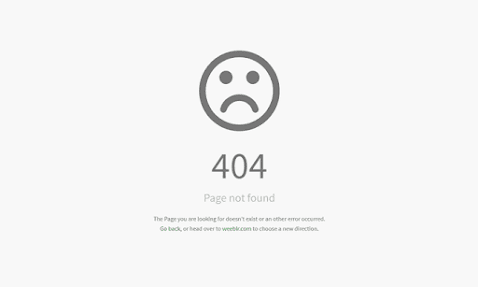Introduction: When it comes to website optimization,
focusing solely on the design and content is not enough. One often overlooked
aspect is the 404 error page. A 404 error occurs when a visitor tries to access
a page that does not exist on your website. Instead of displaying a generic and
unhelpful error message, creating a custom 404 error page can not only enhance
the user experience but also boost your website's SEO. In this blog post, we
will explore the importance of a custom 404 error page and provide an example
to help you get started.
Why Custom 404 Error Pages Matter:
- Retaining
Visitors: A well-designed 404 error page can keep visitors engaged even
when they encounter a broken link or mistype a URL. By offering useful
information and alternative suggestions, you can encourage them to explore
other relevant content on your website instead of leaving immediately.
- Reducing
Bounce Rate: When visitors encounter a generic 404 error page, they are
more likely to leave your website immediately. This can increase your
bounce rate, which negatively impacts your SEO. However, by providing a
customized error page that aligns with your website's branding and offers
helpful navigation options, you can entice visitors to stay longer and
explore further.
- Enhancing
User Experience: A user-friendly 404 error page provides clarity and
guidance to visitors, ensuring they don't get frustrated or confused. By
apologizing for the inconvenience, explaining the error, and providing
links to important sections or a search bar, you can help users find what
they were looking for or discover new relevant content.
- Improving
SEO: Customizing your 404 error page allows you to optimize it for search
engines. By adding relevant keywords, internal links, and a sitemap, you
can provide search engine crawlers with valuable information about your
website's structure. This, in turn, can positively impact your SEO efforts
and potentially improve your search engine rankings.
Example of a Custom 404 Error Page: Here is an example of
how you can create an effective and engaging custom 404 error page:
- Apologize
and Explain: Start by acknowledging the error and apologizing for the
inconvenience caused. Use friendly and approachable language to reassure
visitors that the issue is temporary.
- Branding
and Design: Maintain consistency with your website's branding to make
visitors feel at ease. Use your logo, color scheme, and typography to
create a seamless experience. Ensure that the page is visually appealing
and easy to read.
- Helpful
Content: Offer alternative navigation options to guide visitors back to
relevant content. Include links to popular pages, categories, or a site
search bar to help them find what they are looking for. Consider adding a
featured content section to showcase your best articles or products.
- Error
Reporting: Encourage visitors to report the error by providing a feedback
form or contact information. This helps you identify and fix broken links
or other issues, improving the overall user experience.
- Maintain
Website Navigation: Include your main navigation menu or a simplified
version to help users explore other sections of your website. This prevents
them from feeling lost or disconnected from your site's structure.
Conclusion: Creating a custom 404 error page is a simple yet
effective way to retain visitors, reduce bounce rate, and improve your
website's SEO. By providing a helpful and user-friendly experience, you can
turn a potential frustration into an opportunity to engage your audience
further. Take the time to design a custom 404 error page that aligns with your
brand and offers relevant alternatives, and you'll be on your way to maximizing
the potential of every visitor to your website.
Remember, a well-crafted 404 error page not only keeps your
visitors happy but also demonstrates your commitment to providing a seamless
user experience.









